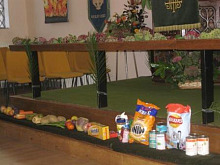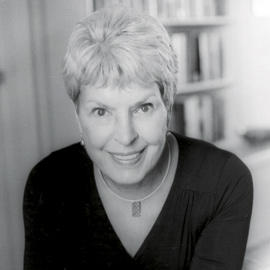Do I really need to have a website?
I don’t know, but my guess is that if you’re asking the question then perhaps the answer’s yes – especially if you’re at the stage of wanting to achieve the following aims:
- building your credibility as a potential author with agents, editors and likely readers, and
- connecting with like-minded people who will buy your work and/or be referrers of your work (also known as an author platform these days)
So this post is especially for new and emerging writers who are hovering nervously on the brink of deciding whether or not to have a website. (In follow-up posts I’ll look at more technical stuff but for now it’ll be pain-free, I promise.)
One step at a time

All is safely gathered in...
Where to start? Forget any anxieties about html coding and file transfer protocols. None of that matters for the moment. The first step is to collect all your assets together. By ‘assets’ I mean all the bits and pieces of information that you might need for your new website. And, as it’s the harvest season, there couldn’t be a more perfect time to gather in what marketing expert C.J. Hayden calls your success ingredients. I love that term – so American and dynamic!
#1 Author Photos You need an author pic – one at least, but a few more would be even better. Either hire a professional – go on, you’re worth it – or take the cost-effective DIY approach. In the latter case, an excellent and user-friendly online tool is Picnik. Here you can upload your photos for free and do the basics of image editing: cropping, resizing and adding special effects. (Don’t make yourself look too gorgeous though, or we won’t recognise you at your book launch. And you may attract stalkers.) You could also check out the advice from Salt Publishing in their 10 Ways to Take a Bad Author Photo.
#2 A Longer Bio
Gone are the days when writers could be all deep and mysterious; it seems we’re expected to give at least the bare bones of our life story. There are different formats, like Questions and Answers, or 12 Things You Didn’t Know About… , as well as a simple and straightforward narrative. (N.B. Longer Bios are not to be confused with the Shorter Bio of around 60 words that you also need.)
#3 List of writing credits
This should include the writing you’ve published so far; writing courses and qualifications; professional engagements; prizes or awards … really, anything that will enhance your reputation and suggest to the casual browser of your website that you’re to be taken seriously.
#4 List of possible links
Who are the people you’d want to link to? Friends and colleagues in your field? Opinion-makers whose work you admire? Even better if your list includes people who are prepared to reciprocate by linking back to you.
#5 Reviews / Endorsements
These are one of the most powerful forms of marketing you can get. Here’s a secret: I’m really shy when it comes to repeating nice things people have said about my writing. (It’s my childhood conditioning I guess, although – oddly – I’m not at all embarrassed by some of the testimonials I’ve received through my business, here and here.) Okay, I have issues to work on but don’t let that stop you.
#6 Notes on your personal brand
You will either loathe or adore this part, but an awareness of your ‘personal brand’ is helpful when you get down to designing your website, or briefing a web designer. Why? Because you want to make sure that your website reflects who you are, through your use of colour, fonts, images, etc.
That’s a lot to be getting on with. Next time, I’ll look at domain registration, static vs. blog websites, and doing a basic storyboard.
Do you want or need a website, or are you determined not to have one? Have I missed out any success ingredients? If you’re a new/emerging writer with your own website, tell us how it’s working for you.
Fiona Joseph



